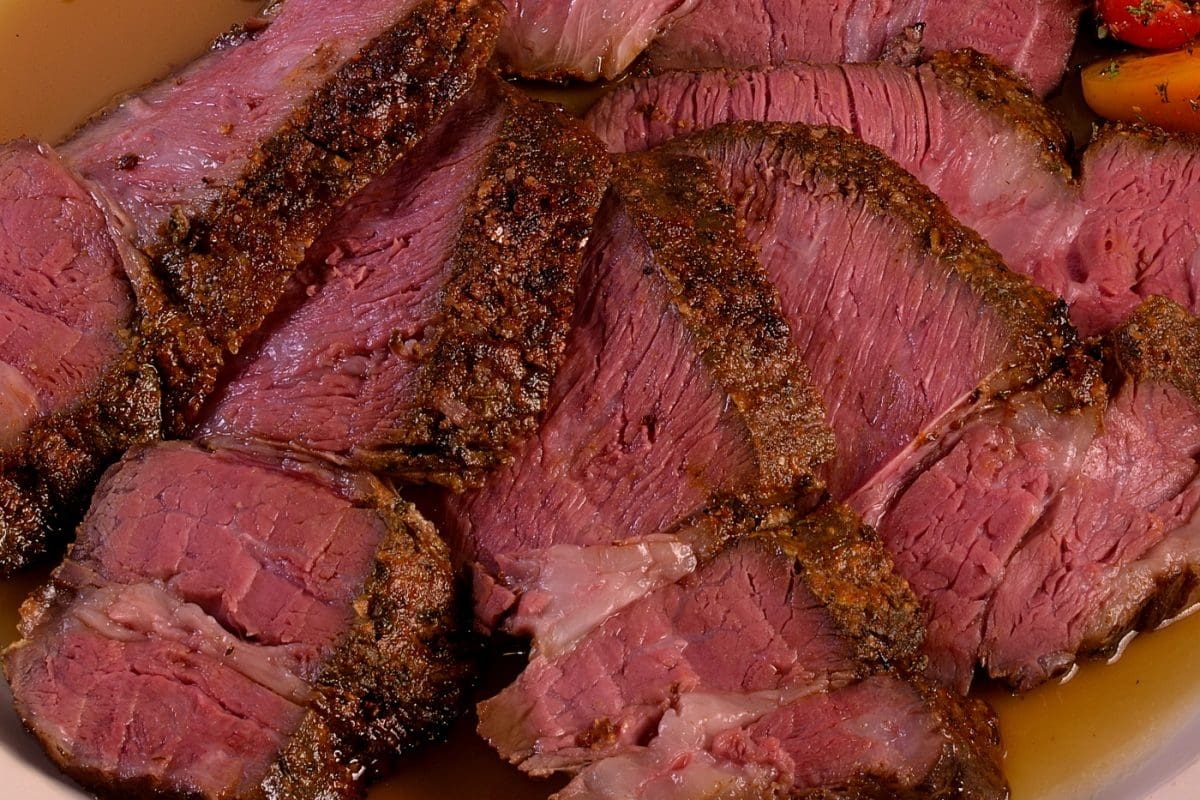
Above: Lipavi C10 container, N10 polycarbonate racks. Lipavi C10L-UNIR lid.
Actual prep time: 1 hour
Level of difficulty: 2.5
Serves 4+
Procedure:
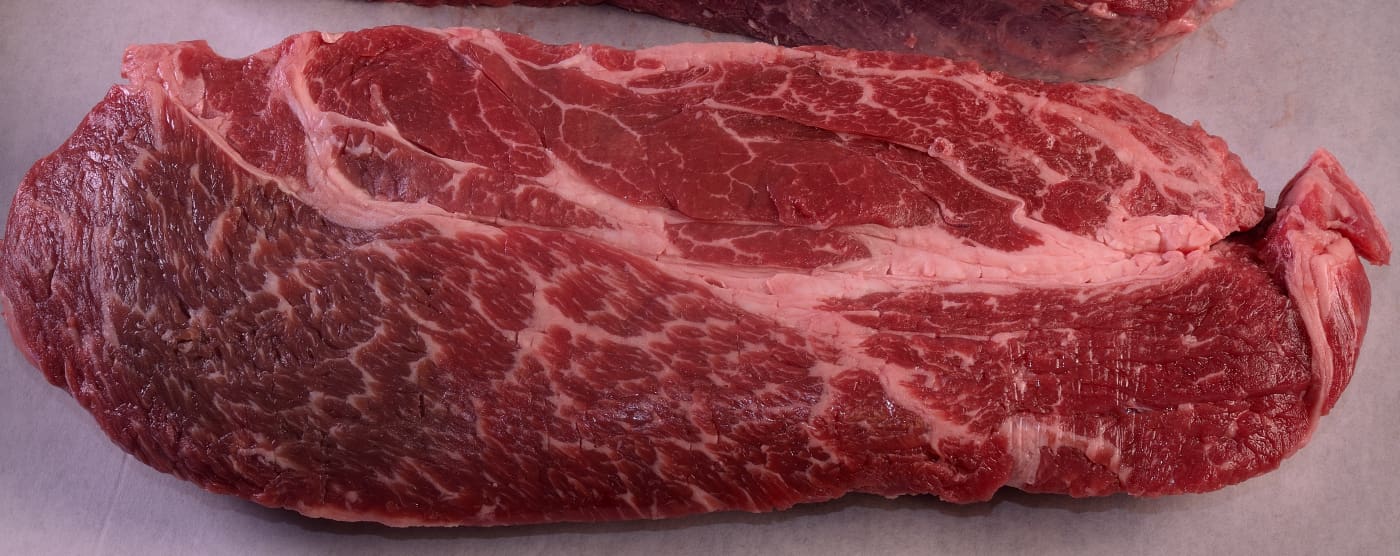
Preheat the sous vide bath to 128 F/53 C.

Vacuum seal the roast in heat rated plastic, load into a rack and submerge into the bath. Process at 128 F/53 C “until it’s tender.” Time at a certain temperature controls texture/tenderness, which is in itself subjective. A clock cannot be used to measure tenderness. The amount of time may vary, even for the same cut from a different steer/heifer. In this case, the process took only 30 hours. In other cases, it may take considerably more–up to 60 hours.

Once the desired level of tenderness has been achieved, remove the bag from the bath and stage onto a clean surface. If you are not ready to serve, you can leave the package in the bath and lower the temperature to 125 F/52 C. This will arrest the tenderization process. You can hold the roast for up to four hours at this temperature without sacrificing any quality or safety.

Harvest the juices.
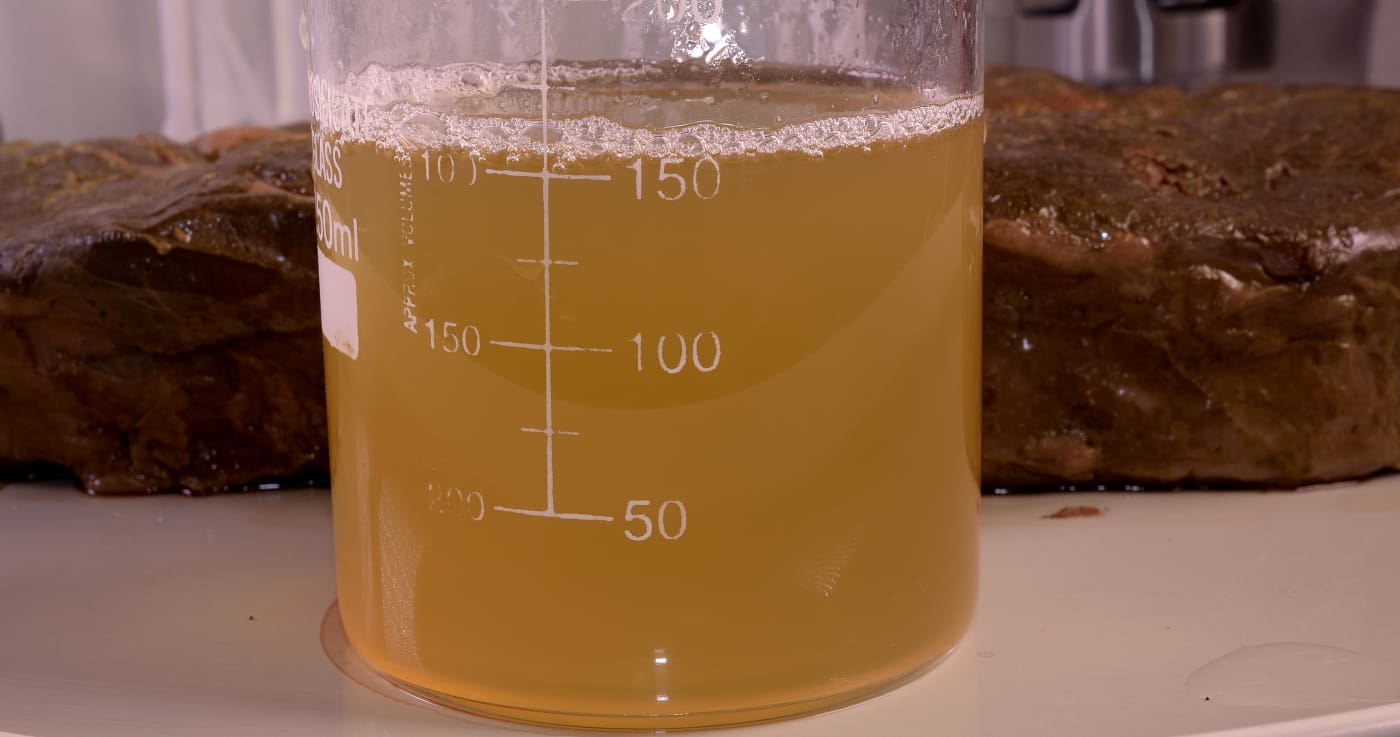
Process the juices according to the method explained HERE. Why is this important? The cooking process causes proteins to discharge myoglobin and albumins.
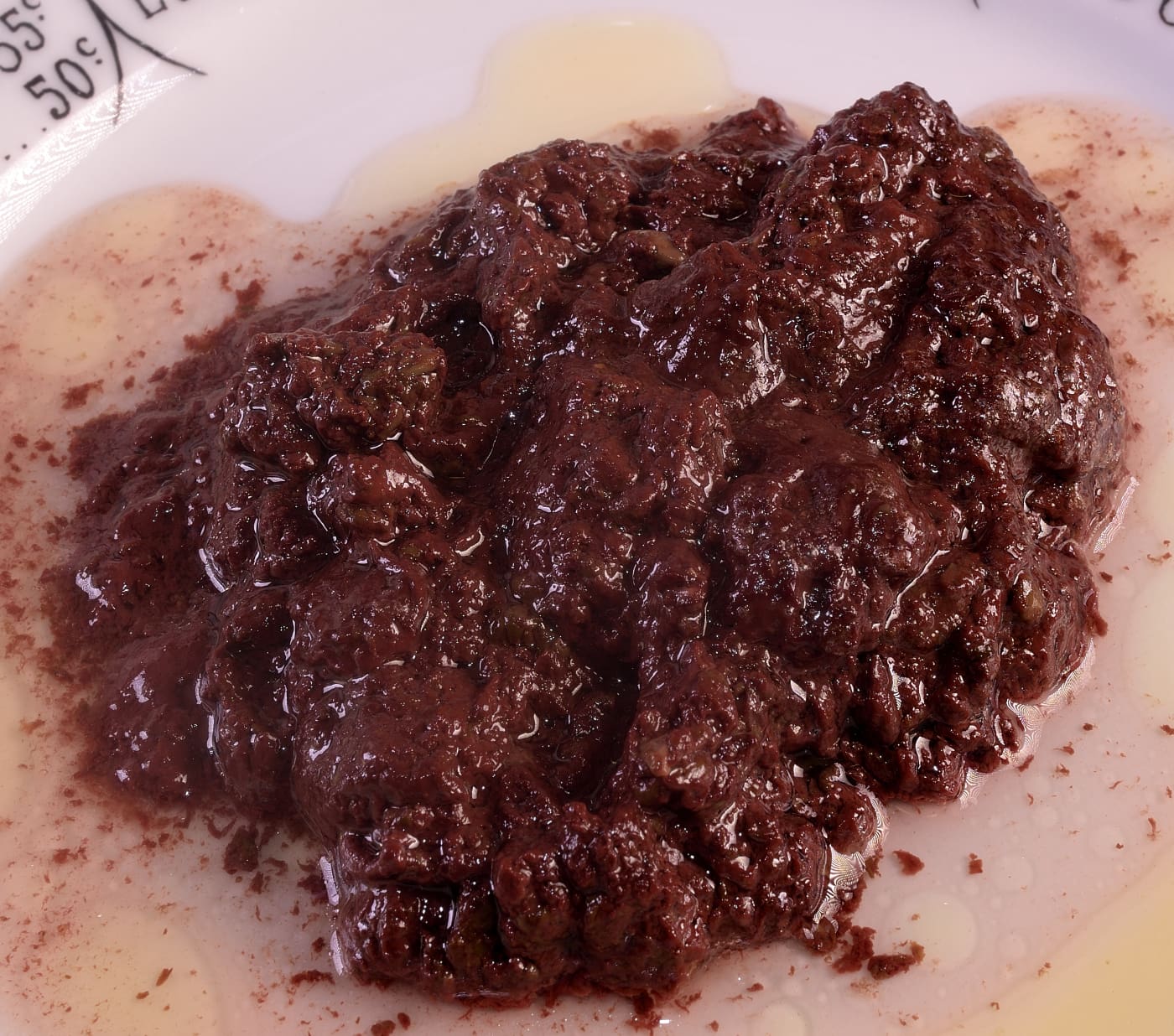
Once denatured, they look like this. Although they are harmless, they create an unpleasant appearance and texture in sauces/soups, etc. They smell/taste somewhat of sulfur and iron, rather like overcooked egg whites. Some people leave them in or even feed them to their pets. I discard them.
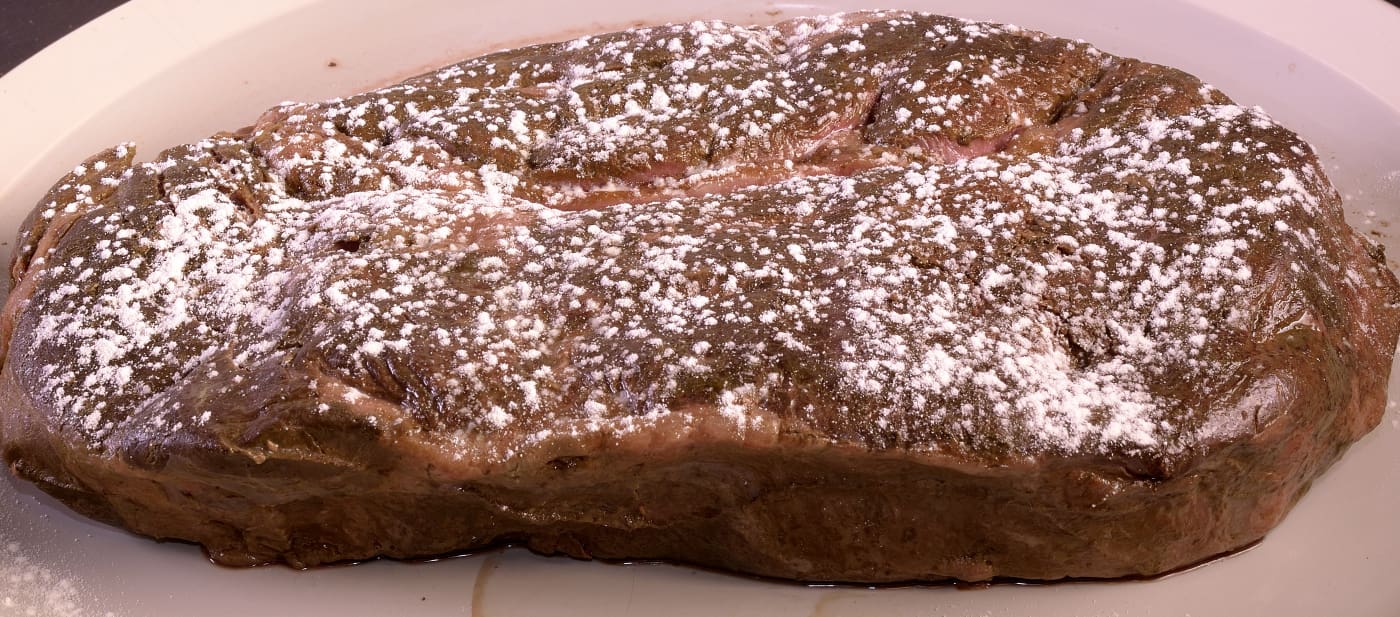
We want to create a sticky surface for our seasonings to cling to. Dust the surface with powdered egg whites. If preferred, you can use a small amount of fresh egg white beaten with an equal amount of water.

Mist with water to dissolve the powdered egg white (not necessary if you use fresh).

Sprinkle with your choice of seasonings. We used a “cooler” variation of our recipe HERE.

Mist with spray release or drizzle with oil.
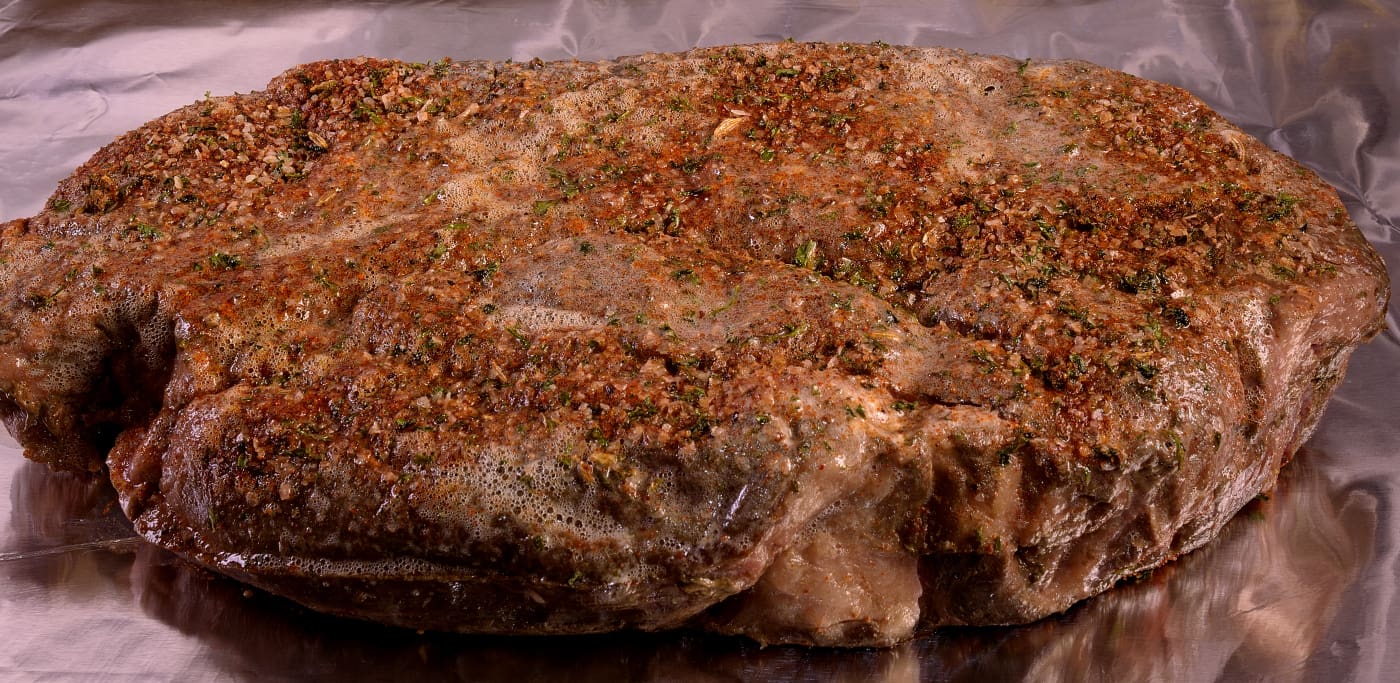
Transfer to a sheet pan lined with aluminum foil. This makes for quick and easy cleanup.
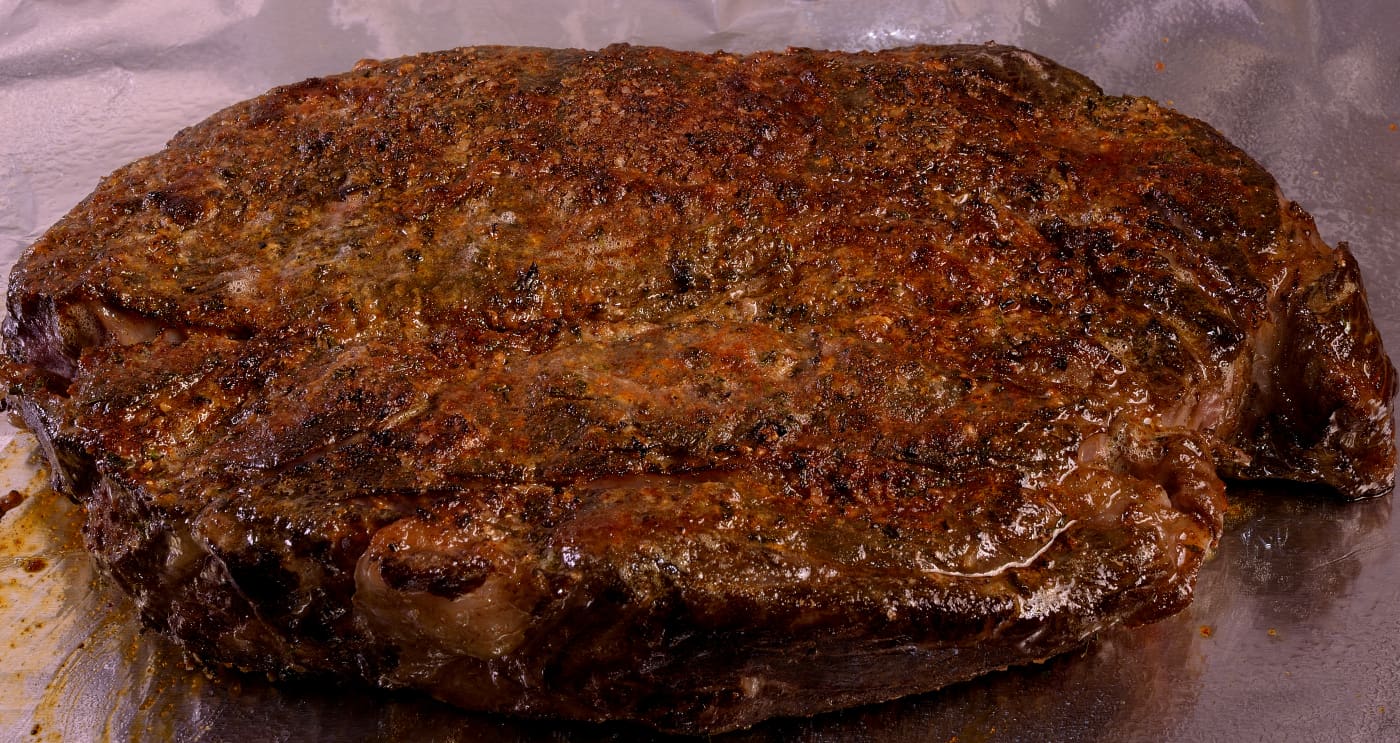
We used the broiler function (salamander), incorporated in most home ovens. We also used a propane torch for a little touch up. An toaster oven/air fryer can also be used, set on the highest temperature available. We want to sear the surface without overly affecting the internal temperature of the roast.
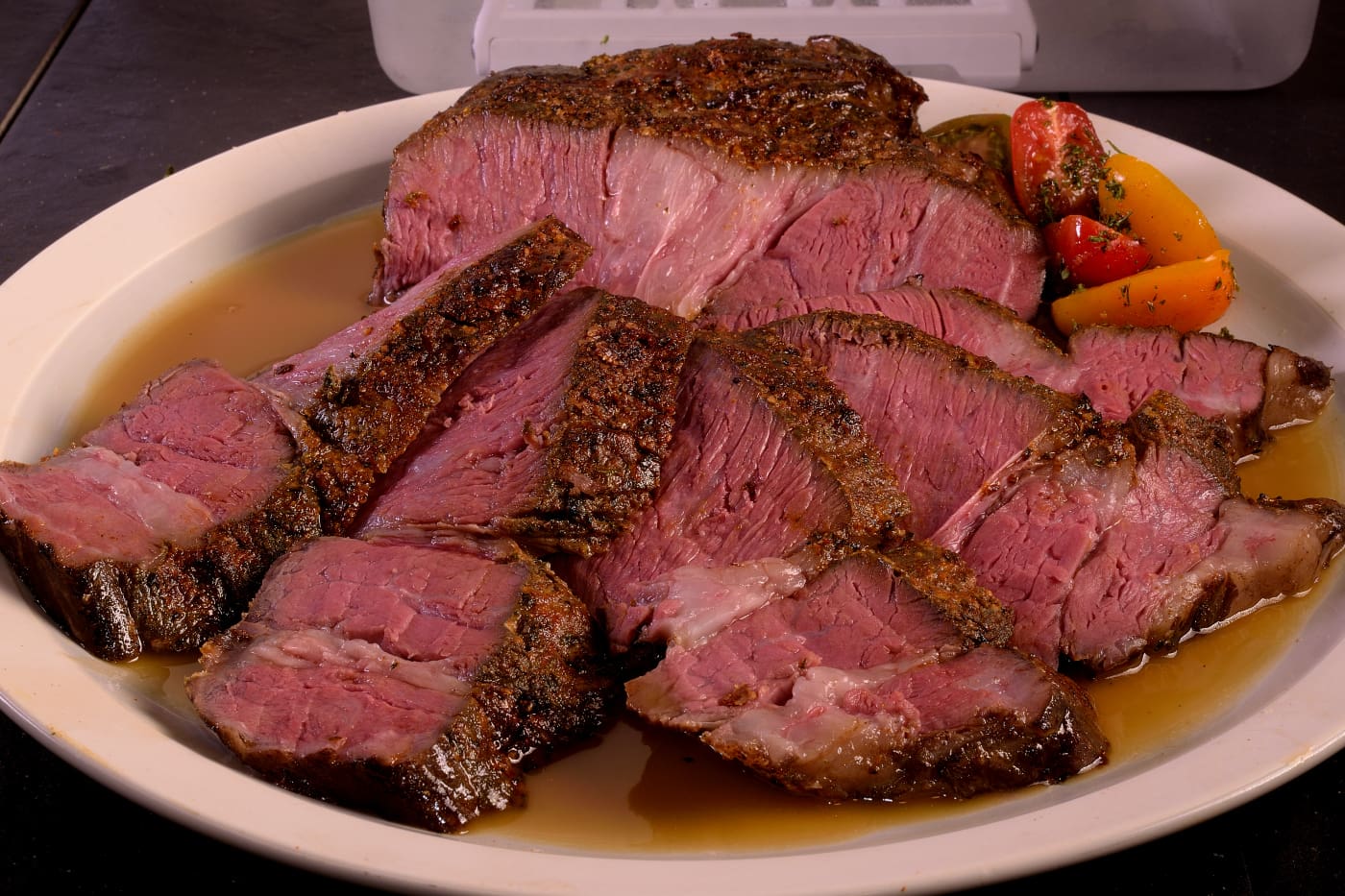
Serve to your liking.
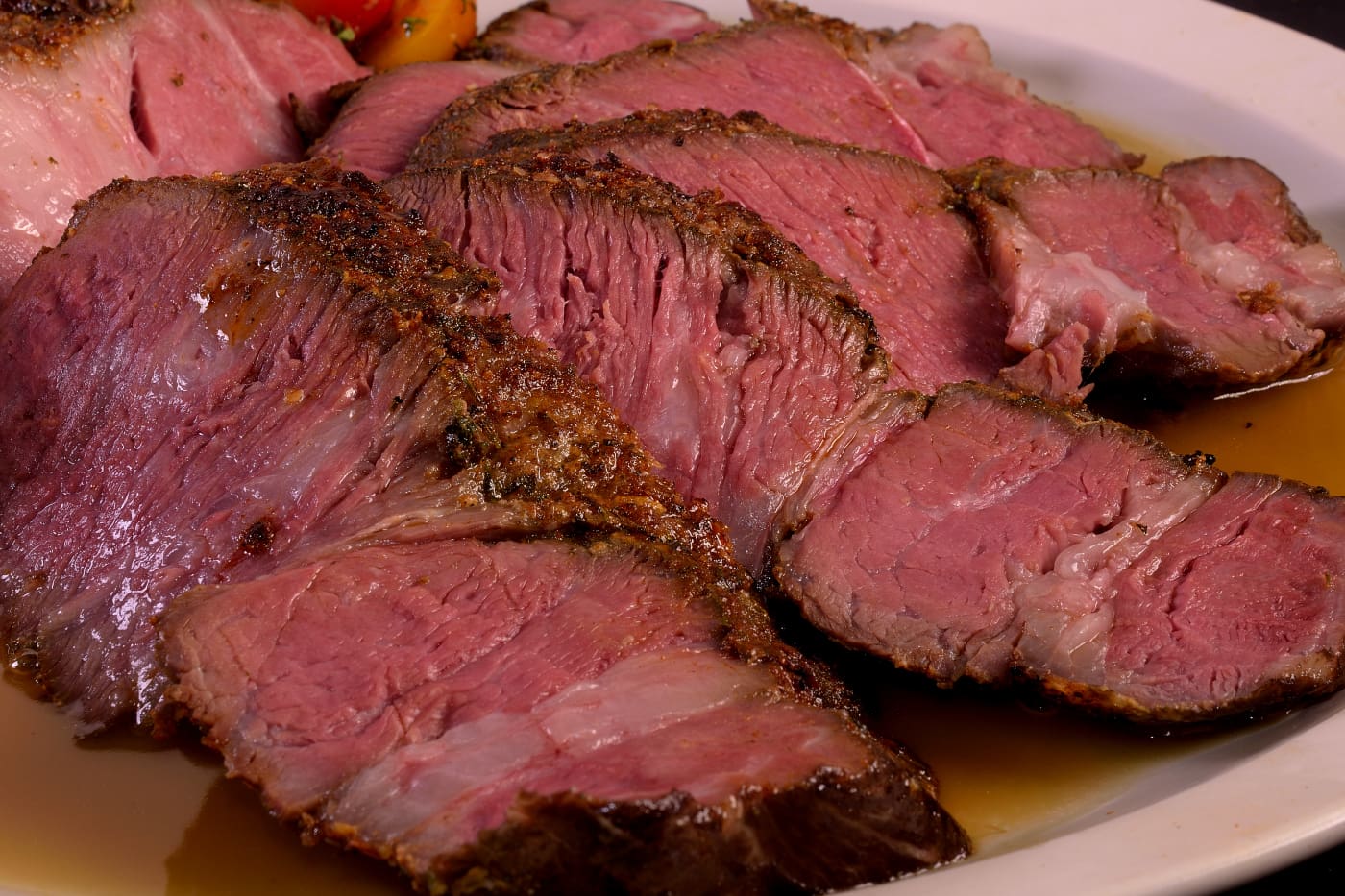
Money

Tomatoes confirm that the rosy hue of the meat was not digitally exaggerated!
Norm
Be sure to visit us in real time on Facebook at SVR–Sous Vide Resources; Low Temperature Pasteurization, Sous-B-Q™
